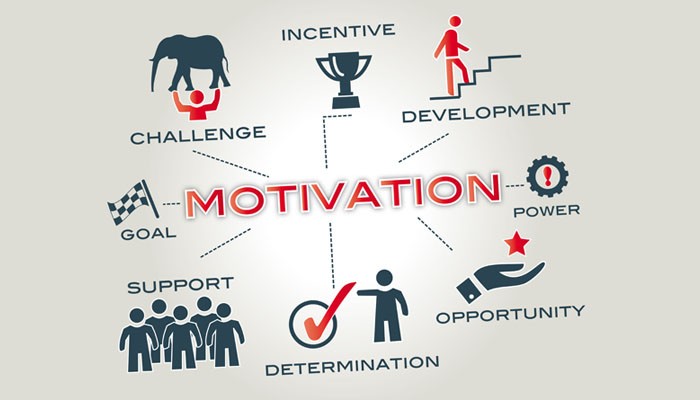Table of Contents
ToggleMaintaining high levels of motivation among team members is crucial for achieving organizational goals and fostering a positive work environment. Team motivated are more productive, engaged, and likely to stay with the company long-term. Here are some effective strategies for keeping your team motivated.
1. Recognize and Reward Achievements
Recognition is a powerful motivator. Regularly acknowledging the hard work and accomplishments of your team members can significantly boost morale. Implementing a recognition program can be simple and effective:
- Public Acknowledgment: Highlight individual or team achievements in meetings, newsletters, or company-wide emails.
- Rewards and Incentives: Offer tangible rewards such as bonuses, gift cards, or additional paid time off. Even small tokens of appreciation can make a big difference.
- Personalized Praise: Tailor your recognition to the individual’s preferences, whether it’s a private thank-you note or a shout-out on social media.
2. Foster a Positive Work Environment
Creating a positive and inclusive work environment where employees feel valued and respected is fundamental to maintaining motivation:
- Open Communication: Encourage open dialogue and provide platforms for employees to share their ideas and concerns. Regular feedback sessions and town hall meetings can help.
- Team Building Activities: Organize regular team-building events to strengthen relationships and build camaraderie among team members.
- Inclusive Culture: Promote diversity and inclusion in the workplace. Ensure that all employees feel they belong and their contributions are valued.
3. Provide Opportunities for Growth and Development
Employees are more motivated when they see opportunities for advancement and personal growth:
- Training and Development Programs: Offer continuous learning opportunities through workshops, online courses, and certifications. Invest in their professional development.
- Career Pathing: Help employees understand potential career paths within the organization. Provide mentorship programs and succession planning to prepare them for future roles.
- Challenging Projects: Assign tasks that stretch their abilities and allow them to develop new skills. Rotate responsibilities to keep the work interesting and engaging.

4. Set Clear Goals and Expectations
Clarity in goals and expectations ensures that employees understand what is required of them and how their work contributes to the organization’s success:
- SMART Goals: Use the SMART criteria (Specific, Measurable, Achievable, Relevant, Time-bound) to set clear and attainable goals.
- Regular Check-ins: Hold regular one-on-one meetings to discuss progress, provide feedback, and realign goals as necessary.
- Transparency: Keep employees informed about the company’s vision, goals, and their role in achieving them. This helps create a sense of purpose and direction.
5. Empower Employees
Empowering employees by giving them autonomy and trust can significantly enhance their motivation:
- Delegation: Delegate meaningful tasks and avoid micromanaging. Trust your team to complete their work effectively.
- Decision-Making: Involve employees in decision-making processes. Seek their input on projects and policies that affect their work.
- Resources and Support: Ensure that employees have the necessary resources, tools, and support to perform their duties effectively.
6. Focus on Work-Life Balance
Promoting a healthy work-life balance can prevent burnout and keep employees motivated:
- Flexible Work Arrangements: Offer flexible working hours, remote work options, and compressed workweeks where possible.
- Wellness Programs: Implement wellness initiatives such as mental health support, gym memberships, and stress management workshops.
- Time Off: Encourage employees to take their vacation days and provide adequate time off to recharge.
Day Off
The #1 tracker for your team’s PTO, vacations and absences, Day Off will help you track your team’s leaves and absences in one place. In seconds you will set up your leave policies, approval workflow and enjoy a unique experience. The “Day Off” app concept revolves around providing users a platform to manage their personal, sick, and vacation days more effectively. features aimed at both individual employees and organizations.
- Employees can track their balances up to date information about their available time off.
- You can add unlimited numbers of employees.
- Supports various leave types (e.g., annual, sick, maternity/paternity leave) and Supports Days and Hours balance, you can add unlimited numbers of leave types and leave policies.
- You can Customize week starting day settings according to your company’s operational days.
- Setting up public holidays specific to your country or region, by importing holidays from Google.
- The app can integrate with ( Slack, Google Calendar, Outlook Calendar and Teams)
- Supports Accruals & Carry overs.
7. Lead by Example
As a leader, your behavior sets the tone for the rest of the team. Leading by example is one of the most effective ways to inspire and motivate:
- Integrity and Accountability: Demonstrate integrity, accountability, and a strong work ethic. Show that you are committed to the same standards you expect from your team.
- Positive Attitude: Maintain a positive attitude, especially during challenging times. Your optimism can be contagious and help keep the team motivated.
- Support and Empathy: Show empathy and support for your team members. Understand their challenges and be willing to help them overcome obstacles.
Conclusion
Keeping your team motivated requires a multifaceted approach that includes recognition, a positive work environment, opportunities for growth, clear goals, empowerment, work-life balance, and strong leadership. By implementing these strategies, you can create a motivated and high-performing team that is ready to tackle any challenge and achieve great success.
Remember, motivation is not a one-time effort but a continuous process. Regularly assess and adapt your strategies to meet the evolving needs of your team and the organization.
